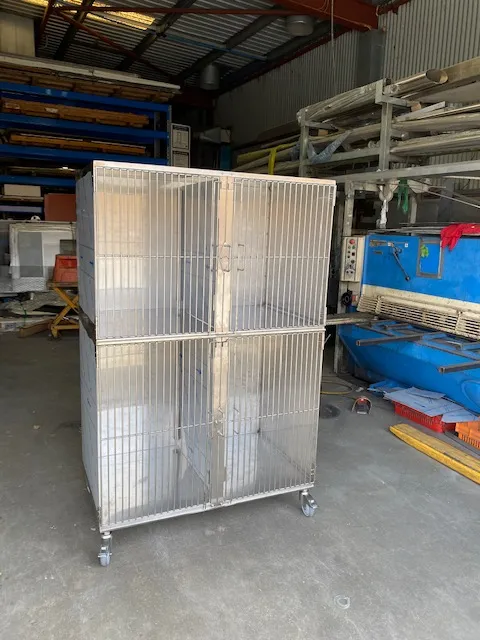
Referring to veterinary cages and equipment as “prison for pets” is not an accurate representation of their purpose or intent. Veterinary cages and equipment serve essential functions in ensuring the well-being, safety, and proper treatment of pets in a veterinary setting. Here are a few reasons why veterinary cages are necessary:
Safety and security: Veterinary cages provide a safe and controlled environment for pets during their examination, treatment, or recovery. They prevent pets from escaping or injuring themselves, especially in situations where they may be stressed, injured, or in need of close monitoring.
Comfort in Containment and Control: Veterinary cages allow for better control over the movements and behaviours of pets, ensuring that veterinary professionals can safely and efficiently administer necessary treatments, examinations, or procedures. It helps prevent pets from interfering with their own care or potentially causing harm to themselves or the veterinary staff.
Disease prevention and containment: Veterinary cages play a crucial role in preventing the spread of contagious diseases between animals. By keeping pets separate and contained, the risk of transmission is minimised, protecting the health of both the pets and other animals within the veterinary facility.
Rest, Recovery and Recuperate: Cages provide a quiet and secure space for pets to rest and recover after surgical procedures or during treatment. They offer a controlled environment where pets can relax, heal, and receive appropriate post-operative or medical care.
Efficient workflow: Veterinary cages help veterinarians and technicians manage their workload effectively by providing a structured space for assessing and treating multiple animals. It allows for organised patient rotation, proper monitoring, and documentation of each pet’s progress and condition.
Veterinary staff safety: Veterinary cages provide a physical barrier between pets and veterinary staff, ensuring their safety during potentially stressful or unpredictable situations. This is particularly important when handling aggressive or fearful animals or when performing procedures that may cause discomfort.
It’s essential to note that veterinary professionals aim to provide the best possible care for pets, and the use of cages or other equipment is not meant to be punitive or restrictive. Veterinary facilities strive to create an environment that prioritises the well-being and comfort of the animals while ensuring their medical needs are met. Additionally, efforts are made to minimise stress and anxiety for pets while they are in veterinary care. This can include providing comfortable bedding, environmental enrichment, and compassionate handling techniques to promote their emotional well-being during their time at the clinic.
Overall, veterinary cages and equipment are tools that are necessary for the safe and effective care of pets in a veterinary setting, and they are designed with the animal’s best interests in mind.